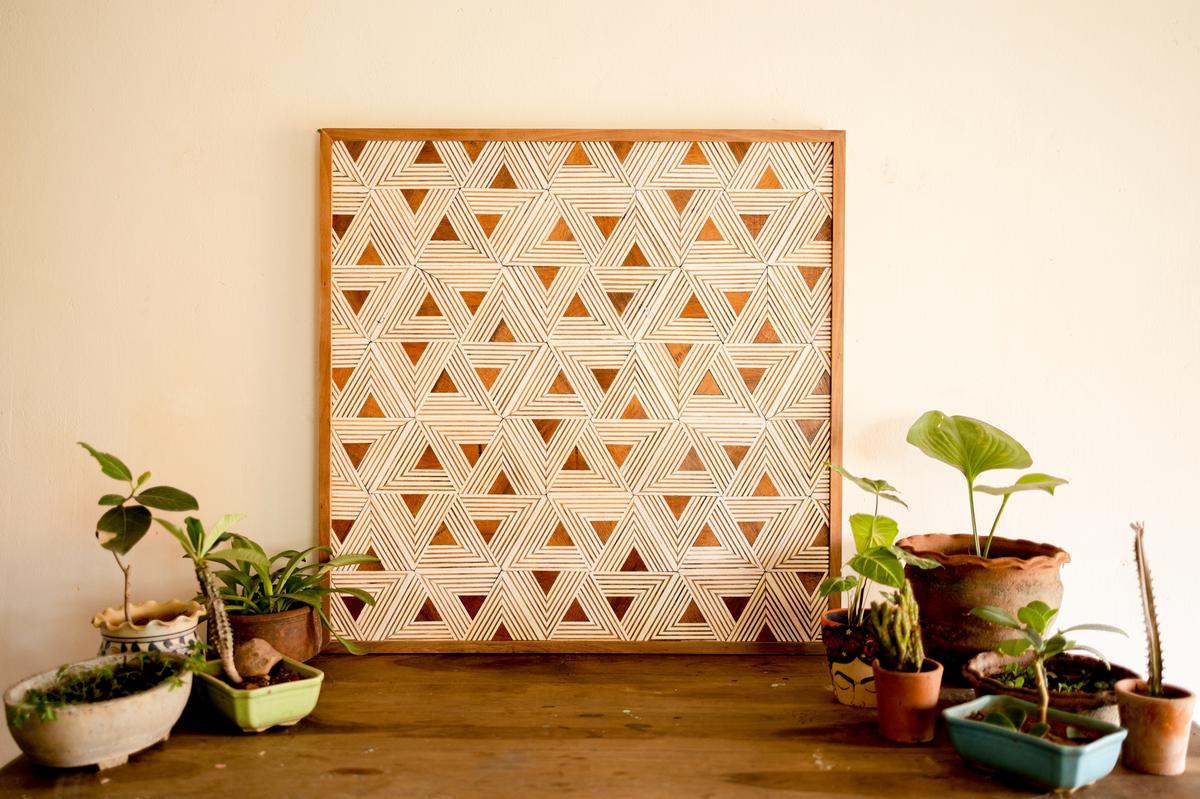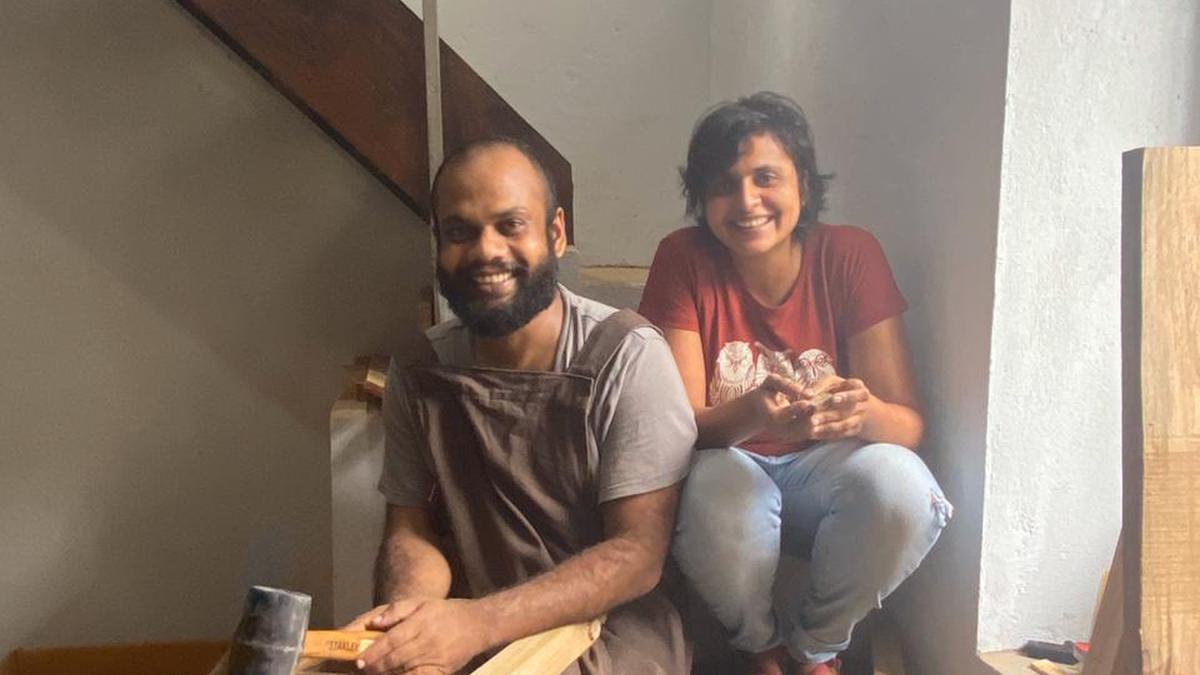Aneesh and Shailna
| Photo Credit: Special arrangement
When urban planners (policy and planning sector) Aneesh Cherian and Shailna Wadhwa started making indoor furniture for their cats, little did they imagine they were building an alternate career for themselves. In 2018 their pet furniture caught the attention of other cat owners and soon they were using their weekends to plan customised furniture layouts. As students of architecture, designing and executing wasn’t a problem. The Delhi-based duo decided to familiarise themselves with tools and the actual work of breathing life into an idea.
A wooden wall hanging made by Studio Clutter
| Photo Credit:
Special arrangement
Fast forward to 2023: Shailna and Aneesh are no longer urban planners; they have shifted to Chennai and travel between Chennai, Hyderabad and Goa to hold workshops on building furniture.
Shailna quickly adds, “Not just furniture building; we also teach various aspects of working with wood; to hilt and carve. When we started, we were customising pet furniture. The pandemic gave us time off from regular work and we practised and worked with wood. In 2021, we decided to quit our jobs and started Studio Clutter.”
They chose the name Studio Clutter because they also make art with found wood, says Shailna . Aneesh explains, “To some people, discarded wood is clutter but we see beauty and character in it. Also, we refuse to stick to one style of work. As artists, we don’t believe one should have a consistent aesthetic, the colour palette, medium and skills. We experiment a lot and have taught ourselves furniture building, wood carving, whittling, wood mosaic art and scroll saw.”

A wooden art piece by Studio Clutter
| Photo Credit:
Special arrangement
The five-year-old Studio Clutter has also been teaching for the last three years. “From 2019 to 2021 we were working on pet furniture, learning from our mistakes and perfecting ourselves before we started teaching,” says Aneesh.
Shailna says, “We don’t shy away from admitting that our first few pieces broke. We learnt through experience. We developed the dexterity of working with tools and mediums, thanks to our architecture school background. That way we caught up pretty fast.”
It took the duo nearly 15 projects to get the hang of customising cat houses perfectly. “It is not so much about the design as working with the space, different materials and cats’ activity level, “ explained Aneesh
“It is a vast subject and it is still a learning process for us. We have learnt one part of working with wood, but not everything. We do very simple designs. In layman’s words what we teach is like initiating one into carpentry. I still don’t know how to bend wood. We know how to work with teak and acacia but give us a new wood and we will need time to learn its character and behaviour,” explains Aneesh.
So they explain that making furniture is not all about sawing, nailing and screwing. Getting the basics right is critical; it begins with correct measurements “for which the angle of the marker and the way it is marked makes a difference. In our class for adults, we discourage purchasing any expensive tools. Our classes focus on how to chisel, to measure, instead of simply sawing and nailing. Workshops for adults focus on interlocking wood joints,” informs Aneesh.
Shailna is happy, “New age parents are not fussy. They are aware that children will be using different tools at work and don’t insist on hanging around. Children love the drilling machine. To ensure we can pay individual attention we don’t take more than five students per workshop. Children are guided through the process of measuring, cutting and assembling the wood pieces. When handling machinery, it is a hand holding session. We also don’t use very powerful tools and ensure protective gears like spectacles, gloves and masks are on. The duration of the workshop depends on what we are teaching. At the end of the workshop students take with them their work. At least two days are required. For ease of handling wood with students we mostly work with German pine wood. ”
When the duo isn’t holding workshops, they are creating art objects to be gifted, taking customised orders etc. Soon, Studio Clutter will work on creating collections.
Studio Clutter conducts a workshop in Hyderabad on April 5 and 6, 8 and 9 for 18 years and above. Workshop fee is ₹7500. Chennai workshop details: April 13 and 14, for 18 years and above, course fee is ₹7500.
For more details on their workshops www.studioclutter.com





